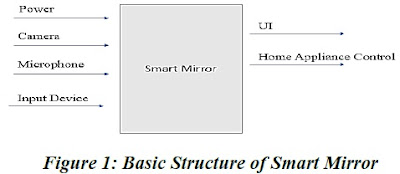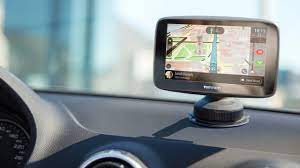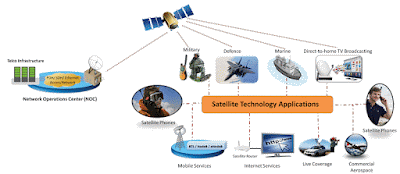Alright, let's get ready to explore the mesmerizing realm of smart mirrors, or as some folks like to call them, enchanting mirrors. These beauties are basically mirrors with an awesome twist: they've got computer screens embedded right in them! How amazing is that? These marvelous smart mirrors can display all sorts of things like social media notifications, news updates, weather forecasts, and more. And you know what's even cooler? They can even act as AI assistants, controlling your home appliances with just your voice or a simple touch. With Wi-Fi and Bluetooth capabilities, they effortlessly connect to a monitor and let you indulge in music and videos. Talk about being fancy!
Introduction:
Prepare
to have your mind blown by the marvels of smart mirrors. Just imagine this:
regular mirrors, but with a high-tech upgrade. When you stand in front of these
impressive devices, they transform into interactive displays. You can engage in
all sorts of fantastic activities like checking social media, sending messages,
and more. They even come with handy widgets that show you the weather, time,
and the latest news headlines. Smart mirrors offer limitless possibilities,
from making your home smarter to revolutionizing various industries. You can
effortlessly control your appliances, try on virtual outfits at the mall, and
add a touch of elegance to any space. And the cherry on top? All of this is
made possible with the power of Raspberry Pi and good old Python programming.
Moreover, they come with built-in speakers, so you can enjoy an intuitive
interface with voice assistance. Isn't it absolutely awesome?
Design:
Now, let's delve into how these extraordinary smart mirrors are assembled. Take a look at Table 1 below to discover the necessary components and their functionalities.
Table 1. Essential Components and Functionality
Level 1
design:
The
fundamental input devices for the mirror encompass a power connection, a
microphone for voice input, and a camera for image processing. And when it
comes to output, we've got a monitor and speakers. Have a glimpse of the basic
structure of a smart mirror in Figure 1.
Alright,
so we've covered the essentials of the smart mirror, but there's a lot more
going on behind the scenes. You might not notice it, but there are IR frames
involved. These frames feature touch sensors on the sides, allowing you to
interact with the mirror without physically touching the screen. Quite
impressive, don't you think? The microphone connects to the Raspberry Pi
through a USB sound card, and the camera can be connected via USB or directly
to the Pi's camera slot. And here's the fascinating part—the Pi can control
home appliances through an 8-channel relay. It's like having your very own
smart home hub!
Now that
we've covered the fundamental design, let's explore the software side of
things. The magic of smart mirrors resides in the software that brings them to
life. Most smart mirrors operate on open-source software platforms like
MagicMirror² or Home Assistant. These platforms provide a vast array of modules
and plugins that you can personalize to suit your needs. Craving to display
your calendar? There's a module just for that. Need to see the latest stock
prices? You guessed it—there's a module for that too. The possibilities are
absolutely boundless.
Level 4:
To create
your very own smart mirror, you'll need to engage in some programming. But fret
not, it's not as daunting as it may seem. Python is a popular language for
developing smart mirror applications, and you'll find an abundance of resources
and tutorials to guide you through the process. You'll need to write code to
retrieve data from various sources, control the display and user interface, and
integrate voice commands. With a bit of coding knowledge, you can genuinely
make your smart mirror one-of-a-kind.
Level 5:
Once you
have your smart mirror up and running, the fun doesn't stop there. You can
continue to expand its capabilities and incorporate new features. Want to
integrate smart home devices like lights, thermostats, or security cameras?
With the right modules and plugins, you can transform your smart mirror into a
central control hub for your entire home. You can also experiment with
different designs and aesthetics to make your mirror truly unique. Whether you
opt for a sleek, modern appearance or a charming, vintage vibe, the choice is
entirely yours.
Conclusion:
Smart
mirrors are an extraordinary fusion of technology and everyday objects. They
bring a touch of futuristic sophistication to our lives while offering
practical functionality. Whether you're using them to stay updated, control
your home, or simply enhance the coolness factor of your space, smart mirrors
are definitely here to stay. So why not plunge in and embark on a journey to
create your very own enchanting mirror?
Hashtag/Keyword/Labels:
#SmartMirrors
#InteractiveDisplays #HighTechUpgrade #RaspberryPi #PythonProgramming
#HomeAutomation #TechnologyRevolution
References/Resources:
1. "MagicMirror²" -
Open-source software platform for smart mirrors: https://magicmirror.builders/
2. "Home Assistant" -
Open-source home automation platform: https://www.home-assistant.io/
3. "Getting Started with
Raspberry Pi" - Official website for Raspberry Pi projects and tutorials: https://www.raspberrypi.org/
4. "Python Programming for
Beginners" - Online resources and tutorials for learning Python: https://www.python.org/about/gettingstarted/
5. "Smart Home Integration
Guide" - Comprehensive guide for integrating smart home devices: [search
Internet]
For more such Seminar articles click index
– Computer Science Seminar Articles list-2023.
[All images are taken from Google
Search or respective reference sites.]
…till
next post, bye-bye and take care.






















